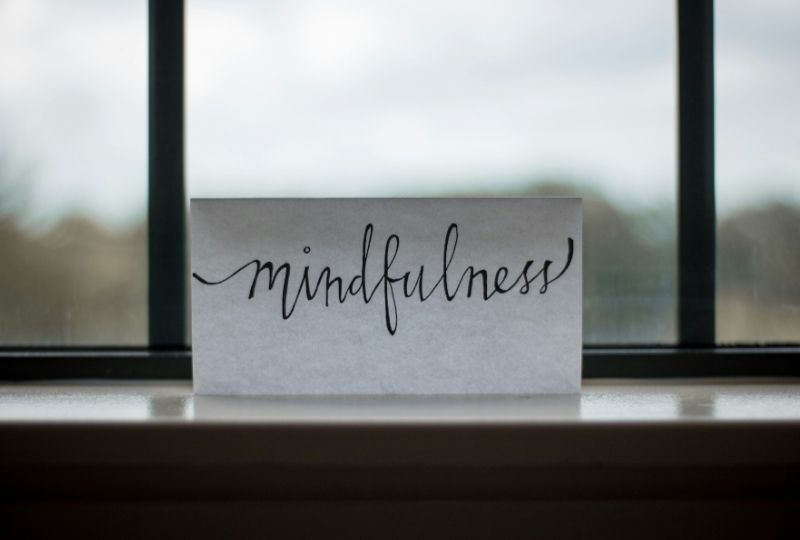In a world full of distractions, stress, and overwhelming responsibilities, many people struggle to stay present and focused. Mindfulness is a simple yet powerful practice that can help you reduce stress, improve emotional well-being, and enhance daily life.
But what exactly is mindfulness, and how can you integrate it into your routine? In this guide, you’ll learn what mindfulness is, its benefits, and how to practice it effectively.
What Is Mindfulness?
Mindfulness is the practice of being fully present in the moment—aware of your thoughts, emotions, and surroundings without judgment. Instead of worrying about the past or future, mindfulness teaches you to focus on the now.
✅ Example of Mindfulness:
- Instead of rushing through meals, mindfulness encourages you to slow down, savor each bite, and appreciate the flavors.
- Instead of reacting impulsively, mindfulness helps you observe emotions before responding calmly.
Mindfulness can be applied to anything—eating, walking, working, or simply breathing.
Benefits of Mindfulness
Practicing mindfulness regularly can lead to:
✅ Reduced Stress and Anxiety → Lowers cortisol levels and promotes relaxation.
✅ Improved Focus and Memory → Enhances cognitive function and mental clarity.
✅ Better Emotional Regulation → Helps control reactions and enhances self-awareness.
✅ Enhanced Relationships → Encourages active listening and empathy.
✅ Improved Physical Health → Lowers blood pressure, strengthens immunity, and improves sleep.
Now, let’s explore how to practice mindfulness daily.
How to Practice Mindfulness in Everyday Life
1. Start with Mindful Breathing
Your breath is a powerful anchor to the present moment.
✅ How to Practice:
- Sit or stand comfortably.
- Close your eyes and take a deep breath in through your nose.
- Exhale slowly through your mouth.
- Focus on the sensation of air entering and leaving your body.
✅ Why It Works: Deep breathing calms the nervous system, reducing stress and anxiety.
2. Practice Mindful Eating
Instead of rushing through meals, practice eating with awareness.
✅ How to Practice:
- Take small bites and chew slowly.
- Notice the flavors, textures, and aromas of your food.
- Avoid distractions (TV, phone, or work).
✅ Why It Works: Mindful eating improves digestion, satisfaction, and enjoyment of food.
3. Be Fully Present in Conversations
Mindfulness can enhance relationships by promoting active listening.
✅ How to Practice:
- Maintain eye contact and listen without interrupting.
- Focus on what the other person is saying, instead of planning your response.
- Observe their emotions and tone of voice.
✅ Why It Works: Being present in conversations strengthens connections and builds deeper relationships.
4. Try Mindful Walking
Walking can be a meditative practice when done mindfully.
✅ How to Practice:
- Walk slowly and pay attention to each step.
- Notice the feeling of your feet touching the ground.
- Observe the sounds, smells, and colors around you.
✅ Why It Works: Mindful walking reduces stress, increases awareness, and improves mood.
5. Limit Multitasking and Focus on One Task at a Time
Multitasking reduces efficiency and increases stress. Instead, focus on one task at a time.
✅ How to Practice:
- When working, eliminate distractions and give full attention to the task.
- Take breaks between tasks to reset your mind.
✅ Why It Works: Focusing on one thing at a time improves productivity and concentration.
6. Use Mindfulness to Manage Stressful Situations
Mindfulness helps you respond thoughtfully instead of reacting emotionally.
✅ How to Practice:
- When feeling overwhelmed, pause for a deep breath.
- Observe your emotions without judgment.
- Ask yourself: “How do I want to respond to this situation?”
✅ Why It Works: Mindfulness allows you to handle stress more calmly and rationally.
7. Try a Daily Mindfulness Meditation
Meditation is one of the best ways to build mindfulness skills.
✅ Simple 5-Minute Mindfulness Meditation:
- Find a quiet place to sit.
- Close your eyes and breathe naturally.
- Focus on each inhale and exhale.
- If your mind wanders, gently bring your focus back to your breath.
✅ Why It Works: Regular meditation improves self-awareness, emotional balance, and inner peace.
8. Set Mindfulness Reminders
It’s easy to forget mindfulness when life gets busy. Setting reminders helps build consistency.
✅ How to Practice:
- Set an alarm or phone notification to pause and take a deep breath.
- Place sticky notes with mindful reminders around your home or workspace.
✅ Why It Works: Small reminders keep you grounded and present throughout the day.
9. Accept the Present Moment Without Judgment
Mindfulness is about accepting life as it is, without resistance.
✅ How to Practice:
- Let go of the need to control everything.
- Accept thoughts and emotions without labeling them as good or bad.
- Focus on what you can control in the present moment.
✅ Why It Works: Acceptance reduces unnecessary stress and emotional suffering.
10. End the Day with Mindfulness
A mindful evening routine helps relax your mind and improve sleep quality.
✅ How to Practice:
- Reflect on one good thing that happened today.
- Do a short breathing exercise or gratitude meditation.
- Avoid screens 30 minutes before bed.
✅ Why It Works: A mindful nighttime routine promotes deeper, more restful sleep.
Final Thoughts
Mindfulness isn’t just a practice—it’s a way of living. By being fully present, you can reduce stress, improve focus, and experience life more deeply.
Start small—choose one or two mindfulness techniques and integrate them into your daily routine. Over time, you’ll notice a profound shift in your mental and emotional well-being.
